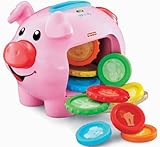Money and Kids - Tips for Helping Your Kids With Money
Teaching kids about money, especially in these times of rampant consumerism, is crucial and parents have an important role.
We live in a society where wants have been accorded a higher priority than needs, credit is easy and financial literacy is low. But help is here.
In this article “Money and Kids” these issues are explored with some great money and finance tips to improve financial literacy and help children become money savvy at an early age.
Along with good clear values, teaching kids about money is one of the greatest gifts we can give them and it’s an ongoing process. The money tips you share with your children will vary with age, with the different personality of each child and the household family values.

Teaching money and kids can begin early. Below are some ideas for various age groups and some suggestions for parents as role models:

Money and Kids Age 4-7
With this age group, start with the basics, keeping money discussions money light and fun.
Kids Earning Money
Introduce the concept of your child earning money. Even four year olds can do small jobs by helping to weed the garden, putting things on the table etc and in exchange earn pocket money.
In discussion, raise the concept of goal setting. Help your child to focus on what they would like but moderate expectations so milestones relatively close and achievable. One week is a very long time in a young child’s life! You want them to succeed.
Consider whether you would like to “match” their savings. It can be a good idea when the children are young but the pattern may carry over into the teen years when the goals are more expensive.
Kids Saving Money
Encourage saving some pocket money for slightly larger items.
You can start earlier than four with a piggy bank and then graduate to a more age appropriate one and your child grows. This money tip is a tangible way for your child to save money. They can put money in and feel the weight of their savings growing.
Tips to help visualize
Develop colorful charts using stickers to reward the efforts and show progress.
The charts can record (on a daily basis) jobs done successfully and are a fun way for parent and child to keep track.
Money and Kids Age 8-12
Goals can be further on the horizon for this aware age group. You know your child and so you will know how far out the goal can be. If you have a “now” child (e.g. they want everything immediately), you can use accumulating money for a specific thing to gently help them out of this issue with immediacy. With a more relaxed child a longer timeframe might work.
Remember that these are their goals.
Kids Earning Money
In the later years, the children will have more opportunity to do small paid jobs like feeding pets for friends or neighbors’.
Kids Saving Money
The piggy bank can still be a good tool for kids aged 8-12. The one shown here is useful for all ages and even has named saving categories - save, spend, invest, donate.
If you haven’t already done so, establish a savings account – see the caution re naming the account in the sidebar later in this article.
Brands versus No-Name - This is a good age to introduce the concept of value regarding similar items like a branded pair of sneakers versus no brand. This will be trial and error so see if they can see past the higher priced branded item.
Of course if you are a buyer of brands then it will be hard to dissuade your child that the brand (and higher price) isn’t important. Instead you may be able to show how savings are possible when items are purchase in sale.
Tips to help visualize
Games are an excellent and fun way to reinforce earlier messages about saving and accumulating.
- Use the game Monopoly. When you play the game Monopoly, chat to your child about money tips and the accumulation phase which is a great introduction to the acquisition of assets.
- The Game of Life is also very useful to introduce life’s lessons and money goals in a fun way.
Of course, it’s important not to get carried away with “the lessons” and forget to play the game with them!
Money and Kids Age 13-17
This is the age concepts can become more complex and consolidate earlier information. Your kids will soon be cutting the strings as increasing independence surges through.
This is the time to reinforce needs over wants.
Teens earning money
Greater opportunities for working and earning arise will give your teens a higher disposable income. The goals can get larger perhaps saving for a car later in these years.
With minimal help from you, budgeting should be relatively routine – in an ideal world anyway!
Teens saving money
The savings accounts will be (hopefully) growing steadily.If earning regularly look at the possibility of having two accounts – one for long term savings or for more ambitious expensive items and one for weekly spending.
If feasible look at direct debits from the income earning accounts to a savings accounts. It’s always easier to save money if you don’t see it!
Try to ensure, that with the introduction of an ATM card, that the convenience of it and the illusion of easy money doesn’t erode all the hard work.
Tips to help visualize
Before your kids fly from the nest, introduce them to these books:
- The Richest Man in Babylon by George S Clason – a perennial best seller this book is approachable for good teen readers. The Richest Man in Babylon has some excellent, but subtle, life lessons delivered in a non threatening way. It’s a must.
- 7 Habits of Highly Effective Teens by Sean Covey - this excellent book was written by a teen for teens. It’s written to appeal to teens. A CD of the same title is also available.
- For the more analytical (and older teen) Sean’s dad’s best selling book 7 Habits of Highly Effective People also provides excellent information on achieving, goal setting and more.
You could also introduce them to some growth models which show how money accumulated at different percentages grow and the relationship between risk and return.
Risk versus Return
When a child is young, you can take more risk with the money to earn a higher return because they have more time. Just be sure you understand the nature of the risk!
However, this money tip should only be applied for long term savings (say over ten years) and not for money required in the short-term.
Money and Kids/Adults 18+
By this age you just hope that life’s important lessons have been taught as your teen prepares to transition to full independence. You may be able to oversee a workable budget before they leave home.
You may also be able to counsel them if they need to obtain a loan for study by talking about the importance of minimizing credit and then paying it back as quickly as possible.
Then, it's up to your teen!

Parental Tips as the Teachers of Money and Kids
Your behavior as a parent is important to. What you do is probably even more important than what you say because your children will mirror your behavior and actions.
Money Tips:
- Set guidelines and enforce them firmly, consistently but fairly.
- Adopt and adapt (to your family) the goal setting mantra - goals should be tangible, detailed, and realistic and have a time attached to the achievement e.g. I will save $4 per week and buy the Game of Life in five weeks time.
- Try to set a good example to your kids of how to handle money.
- Spend what you can afford. If you are a spendthrift, it will be difficult (but not impossible to teach your kids to save.
- Explore the type of language about money you use around the children.
- Eliminate subversive behavior in the household e.g. one parent buys something new and encourages the children not to tell the other parent.
- Even if your record in the money handling department is less than desirable, you can teach your kids the difference between what’s good and what’s not.
- Save in front of the children. Let your kids see what it takes to run the household – not intimate financial data; just a broad brush idea.
- Accept that along the way there will be “oophs” moments. They are all part of learning.
- Understand the power of growth and always save a percentage of your earnings.
- Share ideas with other parents about money and kids.
- Have fun with this!
Help! I’m not in a position to give my kids pocket money
Even if you are not able to give your children pocket money the “earnings principles” will still apply.
You can reward younger children with non monetary rewards like visits to the park, local museum or similar in exchange for jobs.
Show older children the household budget but take care not to concern them too much with lack of money. Buy the games and the books mentioned here, or add them to grandparents Christmas ideas list. See if your library loans games or try eBay for second hand options.
Once teens begin earning their own money, you can help them open a savings account and with their budget.
A word of caution:
When setting up a savings account for your children, depending upon the laws and tax regulations in your country, consider putting the savings account in the name of a trust or in your name as guardian.
If you remain guardian if the money lessons go awry or your child becomes particularly rebellious you will have control and can protect the money for a later stage. If the account is put in their name, when they reach the age of eligibility they can do what they like with it and spend it.
The role of Grandparents/Benevolent Relatives to money and kids
Grandparents/Benevolent Relatives also have an important role.
If you are lucky enough to have such relatives in your family, encourage them to set up a savings program. Alternatively you could establish one for each child and if they desire, they could pay into it. See the caution regarding the name of the account.
Grandparents may also be able to help out with presents which encourage saving and financial literacy.
Money and kids and improving financial literacy is an exciting proposition
It’s exciting to help our children improve their financial literacy so that they enter adulthood with some excellent money handling skills. These skills will last for a lifetime. Some of the ideas here along with the books and games are to help you introduce the concepts to your children in a relaxed fun manner. Enjoy the process.
Please feel free to let me know your ideas for teaching children about money.
**This article is copyright Travelespresso. Please respect my work and if you wish to use it ask me.**
More Travelespresso Hubs.....
- Scenic Flying - How It Used to Be in the 1940's
The scenic flight cruised slowly over the sprawling city of Auckland, its magnificent sparkling harbor beautifully laid out below us. We're passengers in a DC3 aircraft restored by enthusiasts - she's an ex commercial aircraft and served in the war. - Cat with Nine Lives in Tact: Lao Road Trip
If I were a cat I reckon I would have used up at least 8 of my 9 lives on Laos stunning bus trip from Vang Vieng to Luang Prabang. The road's excessively windy, narrow and its scary reputation precedes it as visitors share horror stories. - Chilling Out in Laos
A Laos vacation is sure to appeal to many because of its relaxed atmosphere - even the capital Vientiane is laid back. General information about Vientiane and this enchanting country. - New Wine Knowledge Excites but Will it Bore?
Wine classes have helped this wine lover to identify aromas and separate out some of the myriad of complex flavors in a glass of wine. It's been a revelation. In earlier years, Id been perplexed by the analysis and information wine buffs got from a











